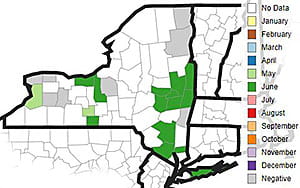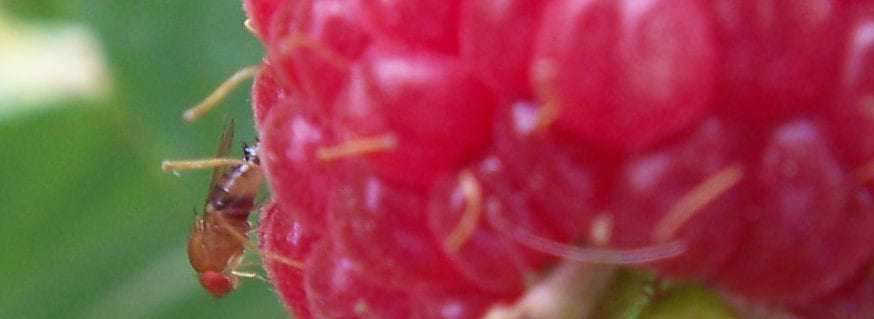Three female SWD were caught in the trap set in Amelanchier (also known as juneberry) growing in the hedgerow by a blueberry planting in Rensselaer County. These traps, checked on June 24, 2019, are being monitored by Laura McDermott, Cornell Cooperative Extension Eastern NY Commercial Horticulture Program.
Early blueberry varieties are beginning to show blush of color. This signals they’re entering a susceptible stage when female SWD can slice through the skin to lay their eggs inside the fruit. So, plan to protect your blueberry crop accordingly!
Comprehensive information on SWD IPM is available in the IPM Guide from the NE IPM Center SWD Working Group:
Spotted Wing Drosophila IPM in Blueberries
neipmc.org/go/swdpub2
Consult Cornell Fruit Resources SWD Management, fruit.cornell.edu/spottedwing/management/.

Refer to the Cornell Guidelines, cropandpestguides.cce.cornell.edu/. Commercial growers should have the 2019 versions of the Berry Crops, Tree Fruit, or Grape Guidelines.
There are 16 sites out of 25 sites (64%) in the monitoring network that have caught SWD. Numbers caught, even at sustained catch, are still relatively low. However, fruit will be ripening over the next several weeks and then be at risk of infestation.

